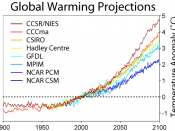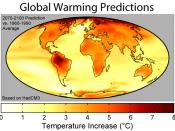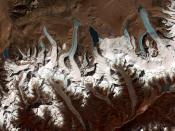Deserts, Glaciers, and Climate � PAGE �1�
Deserts, Glaciers, and Climate
Deserts, Glaciers, and Climate
Desert and glacial landscapes seem to be different; however, when they are perceived from a scientific standpoint they are very similar. Deserts are thought of as being hot and arid, and glaciers are thought of as being cold and wet. This description does not always hold true with these types of landscapes. A desert can be either dry and hot, or cold. This is dependant on the amount of moisture, which causes a desert to be perceived this way.
Deserts whether they are hot or cold, make up a large area of the surface of the earth. A desert is defined as an area that receives a rainfall amount that is less than 50 cm per year. Deserts have specific characteristics, which include animal life and vegetation. The soil in a desert needs water to be productive; however, the soil is not good for long seasons of growth or growing crops.
Large mammals are rarely found in deserts because they are not capable of storing water or being able to withstand the extremely high temperatures of the desert (Johnson & Saroff, 2000). Johnson & Saroff (2000) stated, that there are four types of landscapes found in the desert, which are "hot and dry, semi-arid, coastal, and cold."
Glacial landscapes have an inadequate supply of moisture. In a glacial landscape, the moisture is contained in ice. Glaciers contain a fresh water reservoir, which is the largest known on earth. These glaciers are found in the polar regions, and in the ranges of mountain areas. There are many types of glaciers, which are classified in their relationship to the flow of ice and their altitude. There are also not very many large mammals found in glacier regions;...



Information, definitions etc.
this is part of a series on i'm guessing a geology assignment?
0 out of 0 people found this comment useful.